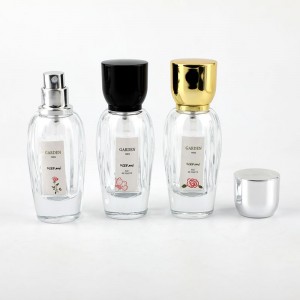Introduction:
Perfume bottles play a crucial role in the world of fragrances. They not only protect the delicate scent but also serve as a reflection of the brand’s identity and artistic expression. Behind these beautiful and intricate bottles lies the fascinating world of perfume bottle factories. In this article, we will delve into the intricacies of perfume bottle manufacturing, from design to production.
1. Design Process:
The journey of a perfume bottle begins with the design process. Perfume bottle factories collaborate with renowned designers and artists to create unique and captivating bottle designs. The design team works closely with the brand to understand their vision, target audience, and marketing strategy. They consider various factors such as aesthetics, functionality, and brand identity to develop a design that perfectly complements the fragrance it will contain.
2. Material Selection:
Once the design is finalized, the next step is selecting the appropriate materials for the perfume bottle. Glass is the most commonly used material due to its transparency, durability, and ability to preserve the fragrance. However, other materials like crystal, ceramic, or even plastic can be used based on the brand’s preferences and budget. The material chosen also affects the manufacturing techniques employed.
3. Manufacturing Techniques:
Perfume bottle factories utilize various manufacturing techniques to bring the designs to life. Glassblowing is a traditional technique where molten glass is shaped using a blowpipe and molds. This method allows for intricate details and customization. Injection molding is another commonly used technique for mass production, where molten plastic is injected into a mold to create bottles. Both techniques require skilled artisans and advanced machinery to ensure precision and quality.
4. Decoration and Finishing:
The aesthetic appeal of a perfume bottle largely depends on its decoration and finishing. Perfume bottle factories offer a range of decoration techniques such as screen printing, hot stamping, frosting, and engraving. These techniques add texture, patterns, and brand logos to the bottles, enhancing their visual appeal. Additionally, finishing touches like applying a cap, attaching a label, and packaging the bottles complete the manufacturing process.
5. Quality Control:
Quality control is of utmost importance in perfume bottle manufacturing. Perfume bottle factories have strict quality control measures in place to ensure that each bottle meets the brand’s standards. Inspections are conducted at various stages of production to check for defects, such as bubbles, scratches, or unevenness. Each bottle undergoes rigorous testing to ensure it is leak-proof and can withstand the demands of transportation and storage.
Conclusion:
The world of perfume bottle manufacturing is a blend of artistry, craftsmanship, and technology. Perfume bottle factories bring the visions of designers and brands to life, creating exquisite bottles that become an integral part of the fragrance experience. From the design process to material selection, manufacturing techniques, and quality control, each step contributes to the creation of a masterpiece that holds the essence of a fragrance.
Post time: Jul-18-2023

